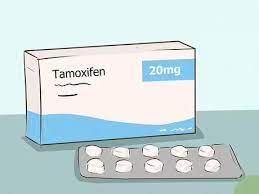Gynecomastia treatment options range from surgery to counselling. The surgery is typically done to remove the fatty and gland tissue in the breast. It can work to reduce the size of the breast, but it won’t work for overweight men, and it leaves small scars around the areolae. Treatment for gynecomastia depends on the causes and severity of the condition.
Table of Contents
Treatment of gynecomastia
Treatment of gynecomastasia involves a range of approaches, depending on the individual patient’s needs and goals. The goal of treatment is to improve the patient’s quality of life, which can be achieved through a variety of treatment options. In order to achieve this, a patient’s gynecomastia surgery in Mumbai should be carefully assessed and diagnosed. The patient should also be given an informed choice of treatment options.
Before determining gynecomastia, a thorough history and physical examination are required. In addition, blood tests, mammograms, and other laboratory tests should be done to rule out other causes. During these tests, the clinician should note any recent changes in lifestyle that may be affecting the development of the breasts.
A surgical procedure called liposuction is one of the more common gynecomastia treatments. The procedure uses a small tube to remove the excess fat from the chest. The patient is usually given local anesthesia. Once the procedure is complete, the patient will have a scar around the nipple and may need to wear an elastic pressure garment.
Treatment for gynecomastia varies based on the underlying cause. It may resolve naturally if the cause is an underlying hormonal disorder, such as estrogen deficiency, or it may require surgical treatment. In some cases, drug therapy can be used to correct the problem. However, most men with gynecomastia do not need surgery cost. However, if the underlying condition is severe and has caused the breast size to increase, the patient may be considered for liposuction.
Treatment after two years
The first step in the treatment of gynecomastia is to find a cause. Gynecomastia is caused by a number of different causes. In some cases, it may be due to a hormonal imbalance, and a doctor may recommend medications such as clomiphene and dihydrotestosterone to help reduce the symptoms. Surgical removal is also an option, but is rare.
While hormone levels in both sexes fluctuate, many factors play a role. Genetics, anabolic steroid use, and malnutrition can all cause an imbalance that can cause breast tissue growth. Men who are under the influence of excess estrogen may have a greater risk for developing gynecomastia than men who have a normal amount of estrogen.
A recent study conducted at the Department of Pathology at the University of Lund in Sweden found an increased risk of developing malignancies in men who had gynecomastia. However, men who had gynecomasteia during the first two years did not experience increased risk of prostate cancer, esophageal cancer, or skin cancer.
The FDA has approved medications that treat gynecomastia. However, if the enlarged breasts persist after treatment, a plastic surgeon can perform a procedure to remove the extra tissue. The procedure is not complicated and the recovery time is fast.
Treatment for dialysis-associated gynecomastia
Patients on hemodialysis have a high risk of developing gynecomastia, which is the result of an abnormally high level of prolactin in the blood. These high levels are called hyperprolactinemia, and result from decreased metabolic clearance of prolactin and a threefold increase in production. The good news is that these high prolactin levels will drop after a renal transplant, and men with dialysis can return to a normal diet and weight.
One patient on hemodialysis for several diseases reported to have developed gynecomastia. The patient was receiving several medications, including anti-androgens to treat enlarged prostate cancer. He was also receiving anabolic steroids for muscle loss due to another disease. He also had a mammogram and ultrasound, which showed tissue growth in both breasts and a mass in his right breast. The patient was referred to a gynecologist and breast surgeon for further evaluation.
True gynecomastia is easily distinguishable from pseudogynecomastia and breast cancer. The former is characterized by a firm, lumpy tissue and can be felt by the physician. The latter, on the other hand, does not feel like a nipple. Breast carcinoma usually presents as a hard, irregular mass outside the areola and is accompanied by skin dimpling, nipple retraction, or axillary lymphadenopathy.
Conclusion
The duration of the gynecomastia affects the initial treatment method. The earlier stage is the best time for medical intervention, while the latter stage can lead to fibrosis.

